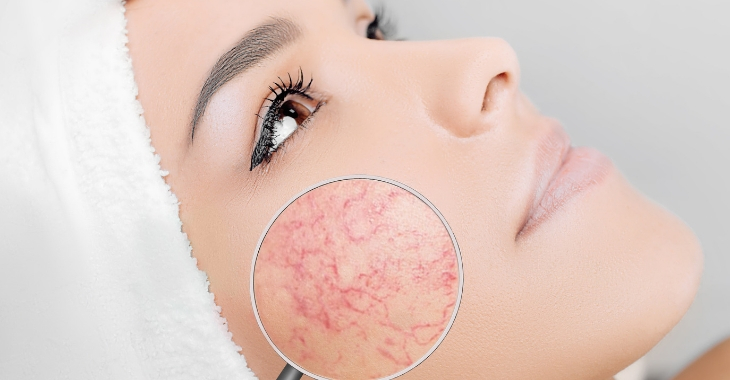5 Facts About Rosacea

It is estimated that 300 million people suffer from rosacea, a skin condition that often manifests with red, bumpy patches. There are theories on what causes rosacea but the exact cause is not known. Correlations have been made between the disease and high risk groups, including fair-skinned ethnicities, women and family-history of the disease. Here are five facts that are known about this skin disorder and how it can be managed.
- Rosacea can be different depending on the type. There are four main types of rosacea: rrythematotelangiectatic, papulorpustular, phymatous and ocular. These can range from a slight pinkish skin formation to thickened skin and bumps or severe eye irritation.
- Rosacea is not related to acne. Although the term “acne rosacea” has been used to describe this skin condition, it is not related to acne or clogged pores. Some types of rosacea can look similar to acne.
- Certain foods or elements can trigger rosacea outbreaks. While it may be different for each patient, there are triggers that can stimulate outbreaks of rosacea. Some foods, sunlight, stress and other factors are common triggers.
- It is not contagious. You cannot get rosacea from coming in contact with infected skin. While many skin conditions are contagious, rosacea is not one of them.
- It is not curable. Unfortunately, there is not a cure for rosacea. However, there have been significant advances in treatment options to keep it controlled. Some include topical medications, laser therapy and antibiotics.
Rosacea can be aggravating and even embarrassing for many people with this skin condition. Those that have rosacea should seek treatment from a dermatologist. There are innovative treatments that can help minimize breakouts and help relieve discomfort.
Posted on behalf of:
Medical Dermatology Specialists
5730 Glenridge Drive, Suite T-100
Atlanta GA 30328
(404) 939-9220
The information provided on this website, including text, graphics, images, and other materials, is intended solely for informational purposes and should not be used as a substitute for professional medical advice, diagnosis, or treatment.
)